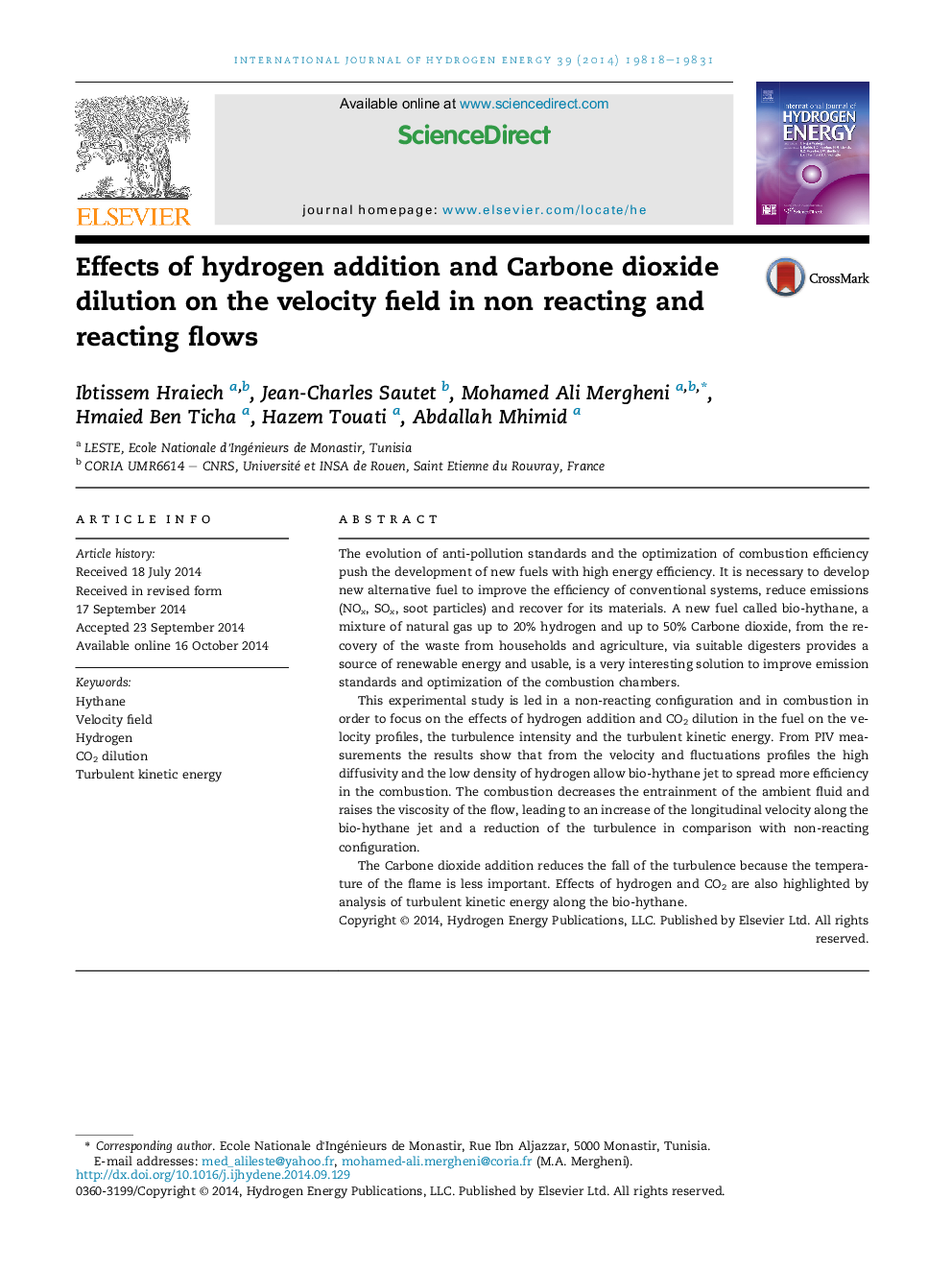| Article ID | Journal | Published Year | Pages | File Type |
|---|---|---|---|---|
| 1280734 | International Journal of Hydrogen Energy | 2014 | 14 Pages |
•This experimental study is led in order to focus on the effects of hydrogen addition and CO2 dilution in the fuel.•The turbulence intensity is intensified with the hydrogen addition and is reduced with carbon dioxide addition.•The turbulent kinetic energy is height less important with hydrogen, and is less with CO2 dilution.
The evolution of anti-pollution standards and the optimization of combustion efficiency push the development of new fuels with high energy efficiency. It is necessary to develop new alternative fuel to improve the efficiency of conventional systems, reduce emissions (NOx, SOx, soot particles) and recover for its materials. A new fuel called bio-hythane, a mixture of natural gas up to 20% hydrogen and up to 50% Carbone dioxide, from the recovery of the waste from households and agriculture, via suitable digesters provides a source of renewable energy and usable, is a very interesting solution to improve emission standards and optimization of the combustion chambers.This experimental study is led in a non-reacting configuration and in combustion in order to focus on the effects of hydrogen addition and CO2 dilution in the fuel on the velocity profiles, the turbulence intensity and the turbulent kinetic energy. From PIV measurements the results show that from the velocity and fluctuations profiles the high diffusivity and the low density of hydrogen allow bio-hythane jet to spread more efficiency in the combustion. The combustion decreases the entrainment of the ambient fluid and raises the viscosity of the flow, leading to an increase of the longitudinal velocity along the bio-hythane jet and a reduction of the turbulence in comparison with non-reacting configuration.The Carbone dioxide addition reduces the fall of the turbulence because the temperature of the flame is less important. Effects of hydrogen and CO2 are also highlighted by analysis of turbulent kinetic energy along the bio-hythane.
